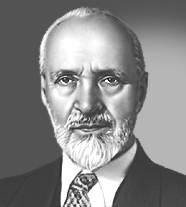
Konstantin owes this unusual surname to his ancestors who came from Switzerland. In the completely Russified family of an insurance agent, he was the fourth child. The way of life in his family was typical of the Moscow intelligentsia.
1875 - 1958

A Russian painter, master of landscape, art theorist and art critic, theater artist. The artist’s creative career and personal life were happy. He was successful from his student years, appreciated after the revolution, got various honours (prizes, orders, titles); he avoided all the persecutions that swept the country in waves. However, he was never an opportunist – the painter worked in his manner and mainly on “his” themes – landscapes and architecture, paying much less attention to plot and portrait painting.
The style of Konstantin Yuon, close to realism and moderate impressionism, acquired a certain colour either of symbolism or of primitivism, but always remained “living” and genuine.
Numerous works of the master are in the collections of large Russian museums and galleries; they are presented at regional and former republican museums of the post-Soviet territory.
Key ideas:
– Having learned some of the principles and techniques of French Impressionists, Yuon did not break close ties with the traditions of Russian Realism: he did not “dissolve” the shape of objects in the environment and did not abandon the prospect.
– Like Boris Kustodiev, Yuon loved Russian antiquity for its decorative brilliance, applied naive art techniques in his plot paintings.
– Yuon witnessed the discovery of Old Russian icon painting by restorers – those bright and clear colours that were discovered influenced the formation of the artist’s colouristic manner.
– The master loved the joy in nature and life; therefore, he mostly painted the sun, sparkling snow, colourful folk clothes and significant monuments of ancient Russian architecture surrounded by landscape. His main creative credo was, “The contemplation of nature and heaven is always an exalted blessing”.
– Working on paintings on historical themes, Yuon also presented them through landscapes. Generalizing the meanings, he strove to remain extremely plausible; it is typical for the artist’s late works that he created in the village of Ligachevo, near Moscow (the painter often worked there from 1908 to 1958, building himself a house-workshop).
– He created some paintings of his late period remembering his childhood and adolescence. They are characterized by a special lyricism because they are associated with the poetic perception of the life of the old pre-revolutionary Moscow, which brought up the artist. One of the paintings of 1946 is named particularly: “Feeding pigeons on Red Square in the years 1890-1900”.
1875
1892
1900
1903
1905
1921
1925
1945
1948
1950
1957
1958

Konstantin owes this unusual surname to his ancestors who came from Switzerland. In the completely Russified family of an insurance agent, he was the fourth child. The way of life in his family was typical of the Moscow intelligentsia.


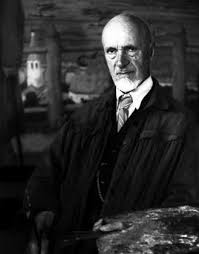
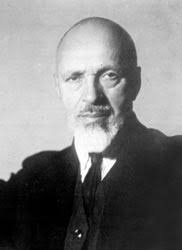
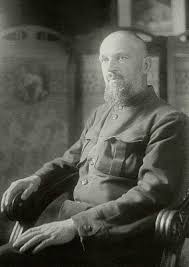
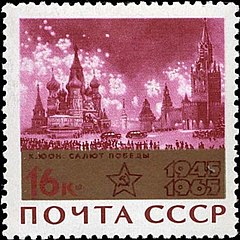
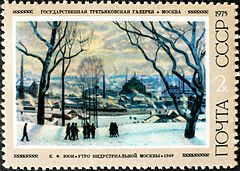
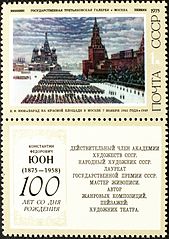

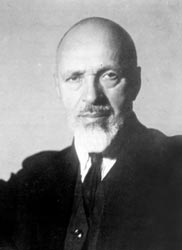

flow
Symbolism
Realism
Primitivism
Modern
friends
Alexandre Benois
Igor Grabar
artists
Nikolay Kasatkin
Konstantin Savitsky
Abram Arkhipov
Valentin Serov
Isaac Levitan
flow
Modern
friends
Ivan Dudin
artists
Lyubov Popova
Olga Rozanova
Otto Skulme
Varvara Stepanova
Nadezhda Udaltsova
Robert Falk
Alexander Vasilievich Kuprin
Vladimir Andreevich Favorsky
Vera Ignatievna Mukhina
Vasily Alekseevich Vatagin
Vesnin brothers
Nikolai Dzhemsovich Collie
Alexey Grishchenko
Mikhail Grigorievich Reuter
Nikolai Borisovich Terpsichorov
Yuri Alekseevich Bakhrushin
Falileev Vadim Dmitrievich
Shaya Noevich Melamud